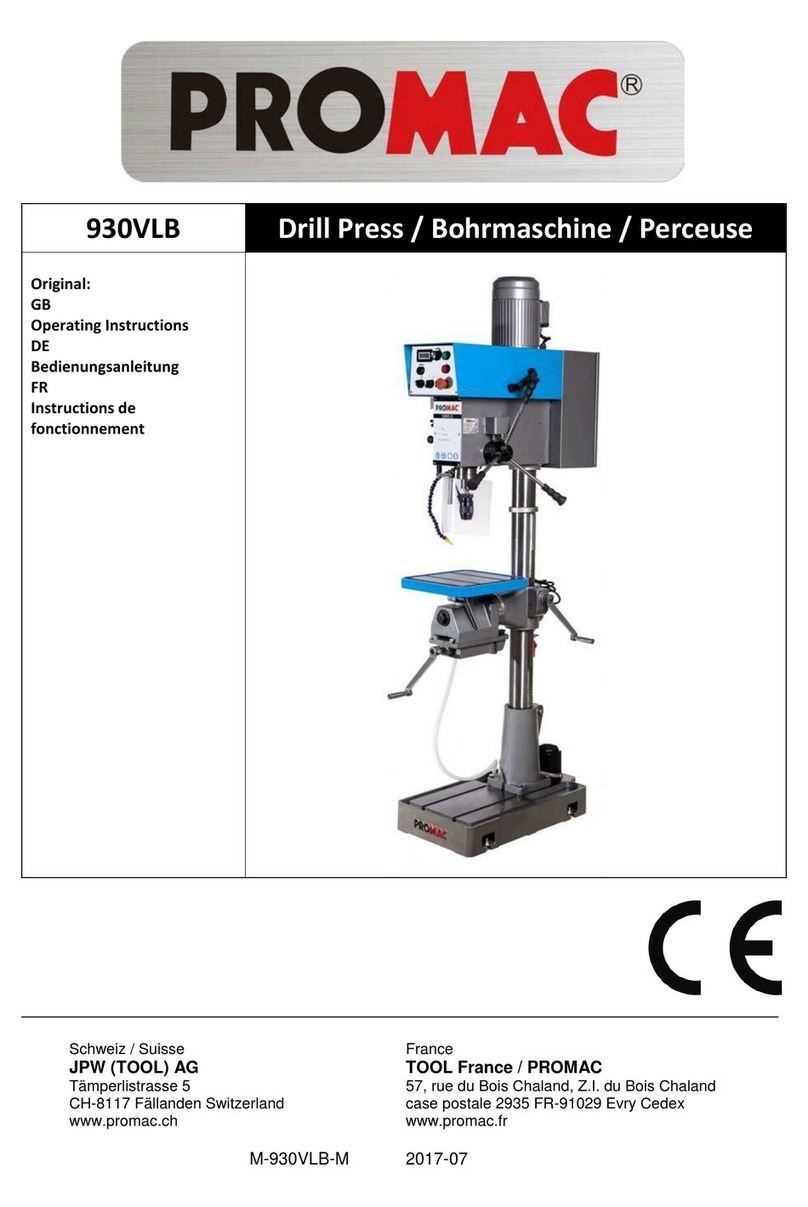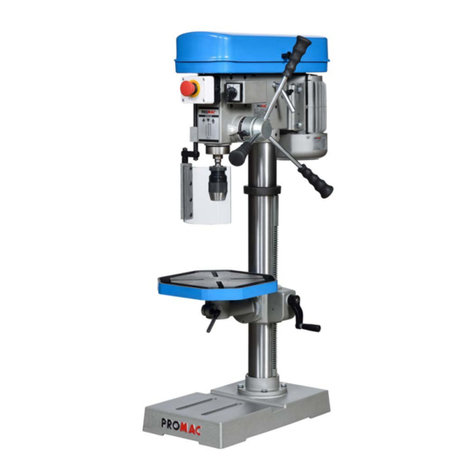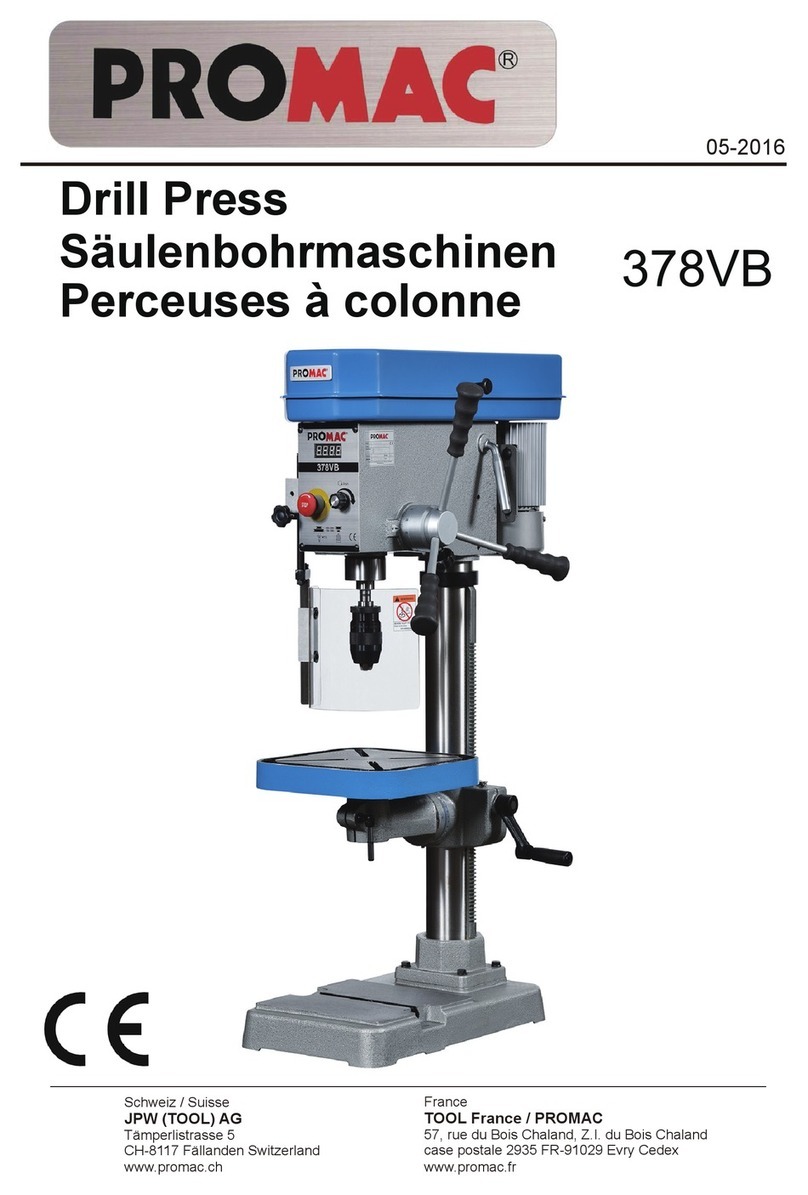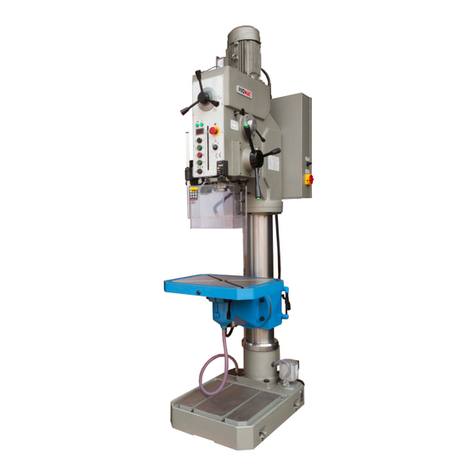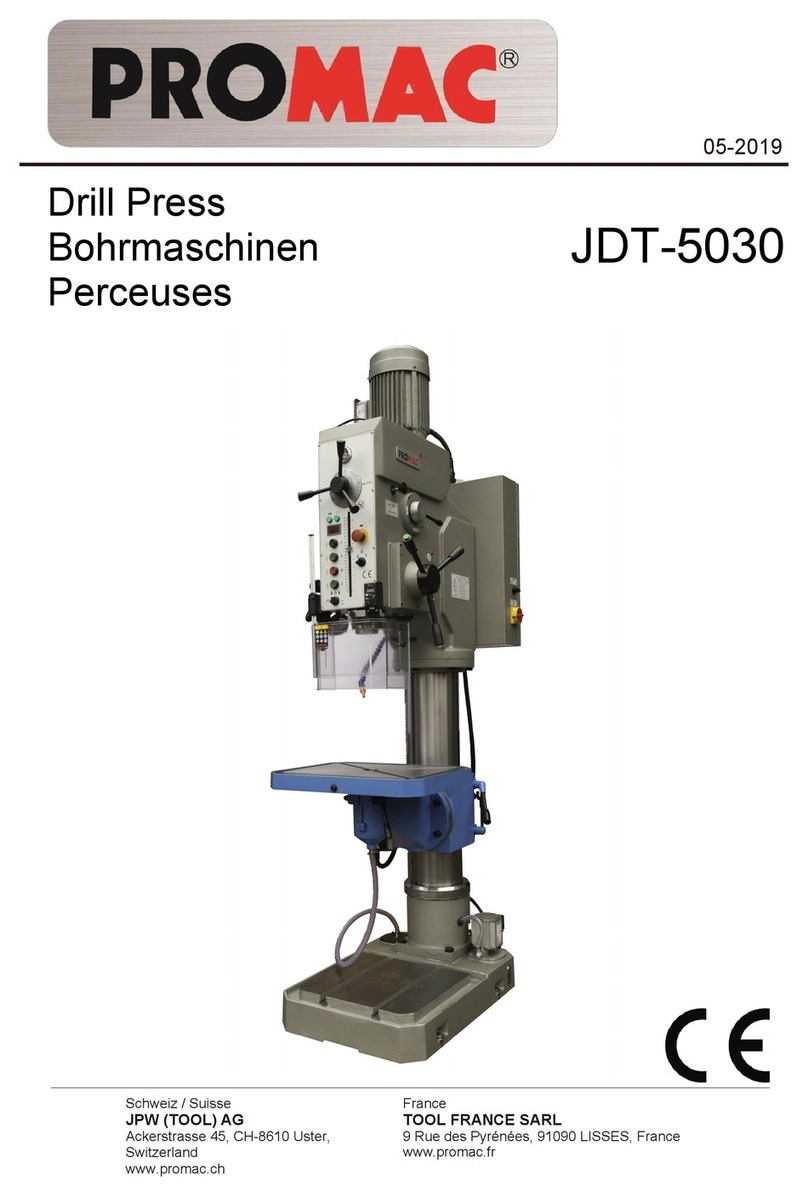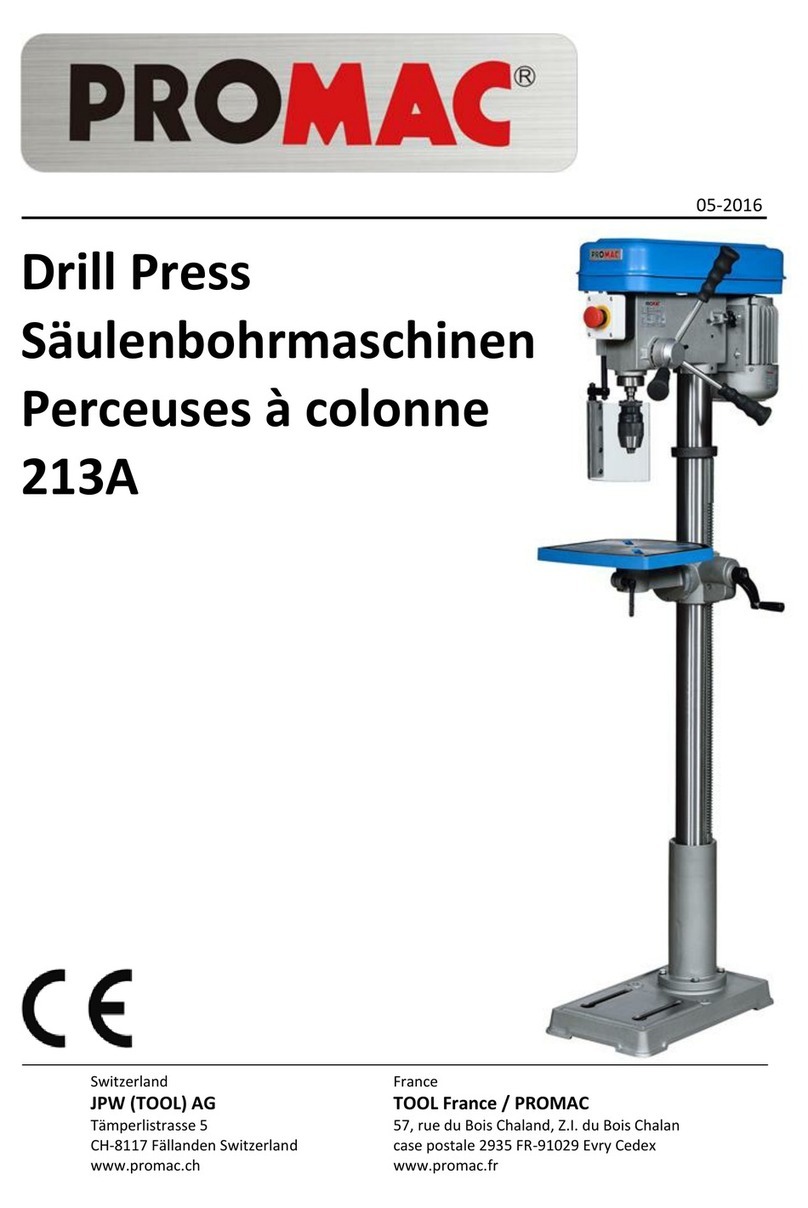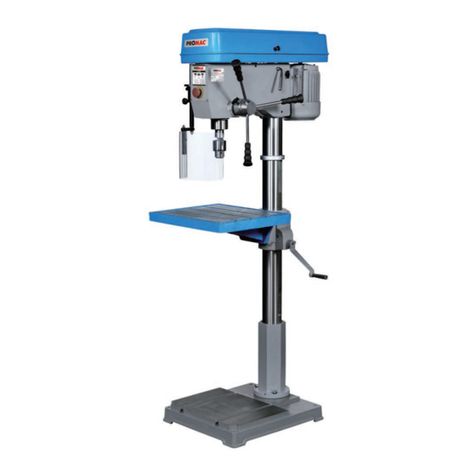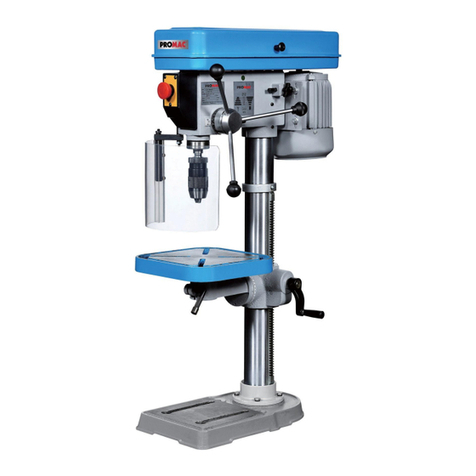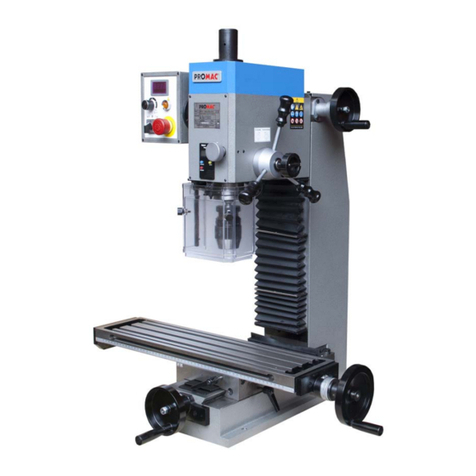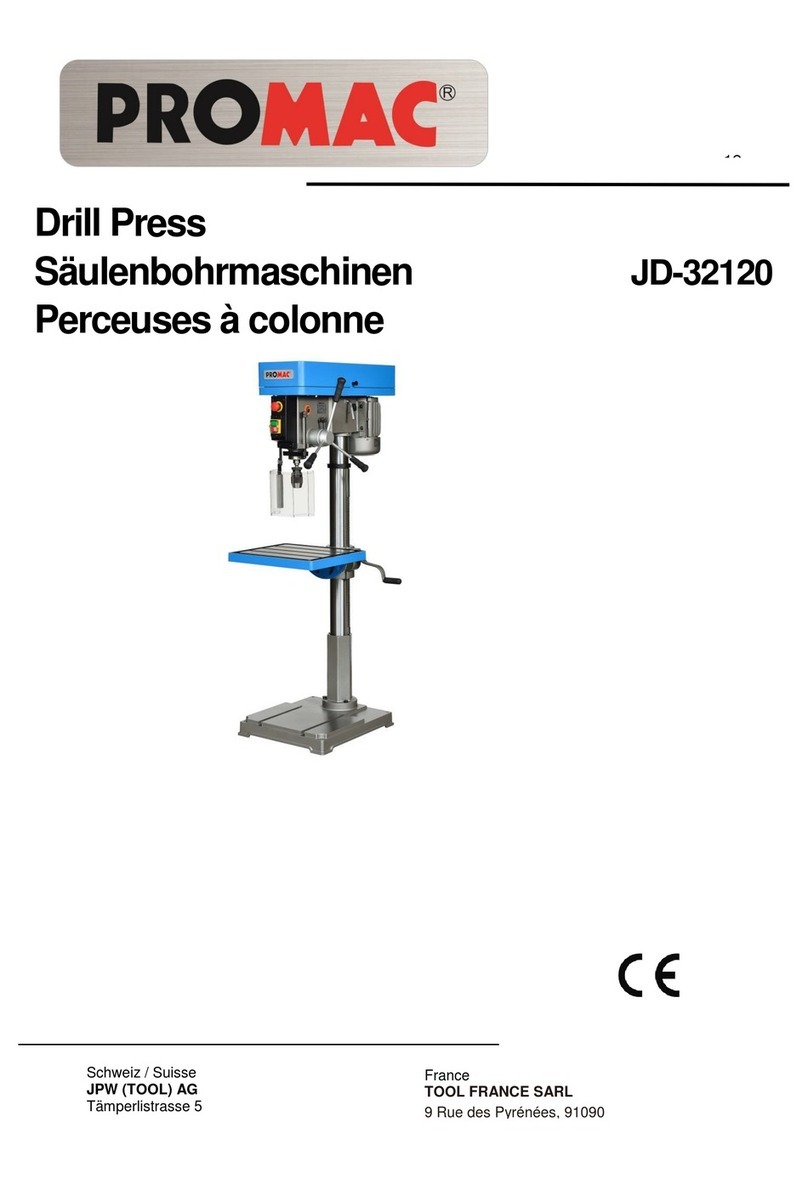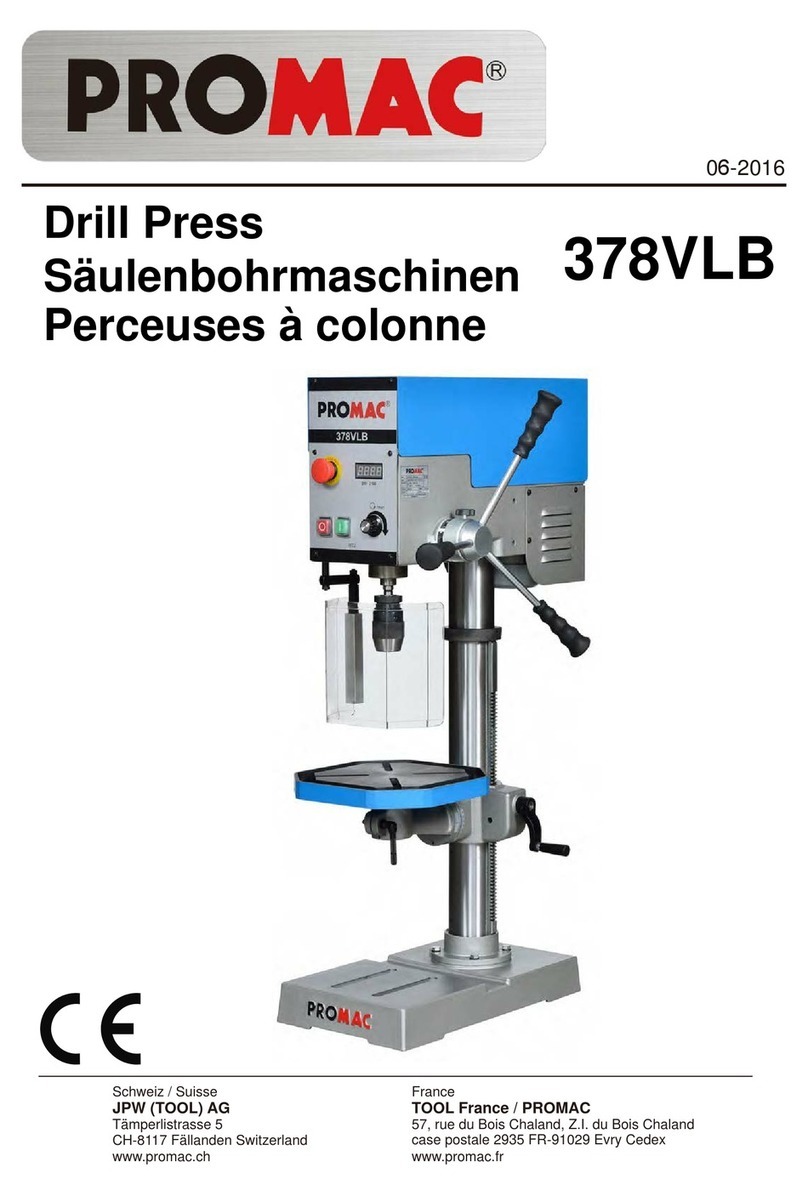4
No changes to the machine may be
made.
Daily inspect the function and
existence of the safety appliances
before you start the machine.
Do not attempt operation in this case,
protect the machine by unplugging the
power cord.
Before operating the machine, remove
tie, rings, watches, other jewellery, and
roll up sleeves above the elbows.
Remove all loose clothing and confine
long hair.
Wear safety shoes; never wear
leisure shoes or sandals.
Always wear the approved working
outfit:
- safety goggles
- ear protection
- dust protection
Do not wear gloves while operating
this machine.
Install the machine so that there is
sufficient space for safe operation and
workpiece handling.
Keep work area well lighted.
The machine is designed to operate in
closed rooms and must be bolted
stable on firm and levelled table
surface or on the supplied cabinet
stand.
Make sure that the power cord does
not impede work and cause people to
trip.
Keep the floor around the machine
clean and free of scrap material, oil
and grease.
Stay alert!
Give your work undivided attention.
Use common sense. Do not operate
the machine when you are tired.
Keep an ergonomic body position.
Maintain a balanced stance at all
times.
Do not operate the machine under the
influence of drugs, alcohol or any
medication. Be aware that medication
can change your behaviour.
Never reach into the machine while it
is operating or running down.
Keep children and visitors a safe
distance from the work area.
Never leave a running machine
unattended. Before you leave the
workplace switch off the machine.
Do not operate the electric tool near
inflammable liquids or gases.
Observe the fire fighting and fire alert
options, for example the fire
extinguisher operation and place.
Do not use the machine in a dump
environment and do not expose it to
rain.
Before machining, remove any nails
and other foreign bodies from the
workpiece.
Work only with well sharpened tools.
Machine only stock which rests
securely on the table.
Always close the chuck cover before
you start the machine.
Specifications regarding the maximum
or minimum size of the workpiece must
be observed.
Do not remove chips and workpiece
parts until the machine is at a
standstill.
Do not stand on the machine.
Connection and repair work on the
electrical installation may be carried
out by a qualified electrician only.
Have a damaged or worn power cord
replaced immediately.
Make all machine adjustments or
maintenance with the machine
unplugged from the power source.
Never place your fingers in a position
where they could contact the drill or
other cutting tool if the work piece
should unexpectedly shift or your hand
should slip.
Secure workpiece against rotation.
Use fixtures, clamps or a vice to hold
the workpiece.
Never hold the workpiece with your
hands alone.
Whenever possible, position the work
piece to contact the left side of the
column. If it is too short or the table is
tilted, clamp solidly to the table. Use
the table slots or clamping ledge
around the outside of the table.
When using a drill press vice, always
fasten it to the table.
Never do any works “freehand” (hand-
holding the work piece rather than
supporting it on the table), except
when polishing.
Securely lock the head to the column
and the table bracket to the column
before operating the press.
Never move the head or the table
while the machine is running.
If a work piece overhangs the table
such that it will fall or tip if not held,
clamp it to the table or provide
auxiliary support.
Do not use wire wheels, router bits,
shaper cutters, circle cutters, or rotary
planers on this drill press.
To avoid injury from parts thrown by
the spring, follow instructions exactly
as given when adjusting the spring
tension of the quill.
To avoid injury from parts thrown by
the spring, follow instructions exactly
as given in chapter 7.5.
3.3 Remaining hazards
When using the machine according to
regulations some remaining hazards
may still exist.
The rotating drill bit can cause injury.
Thrown workpieces and workpiece
parts can lead to injury.
